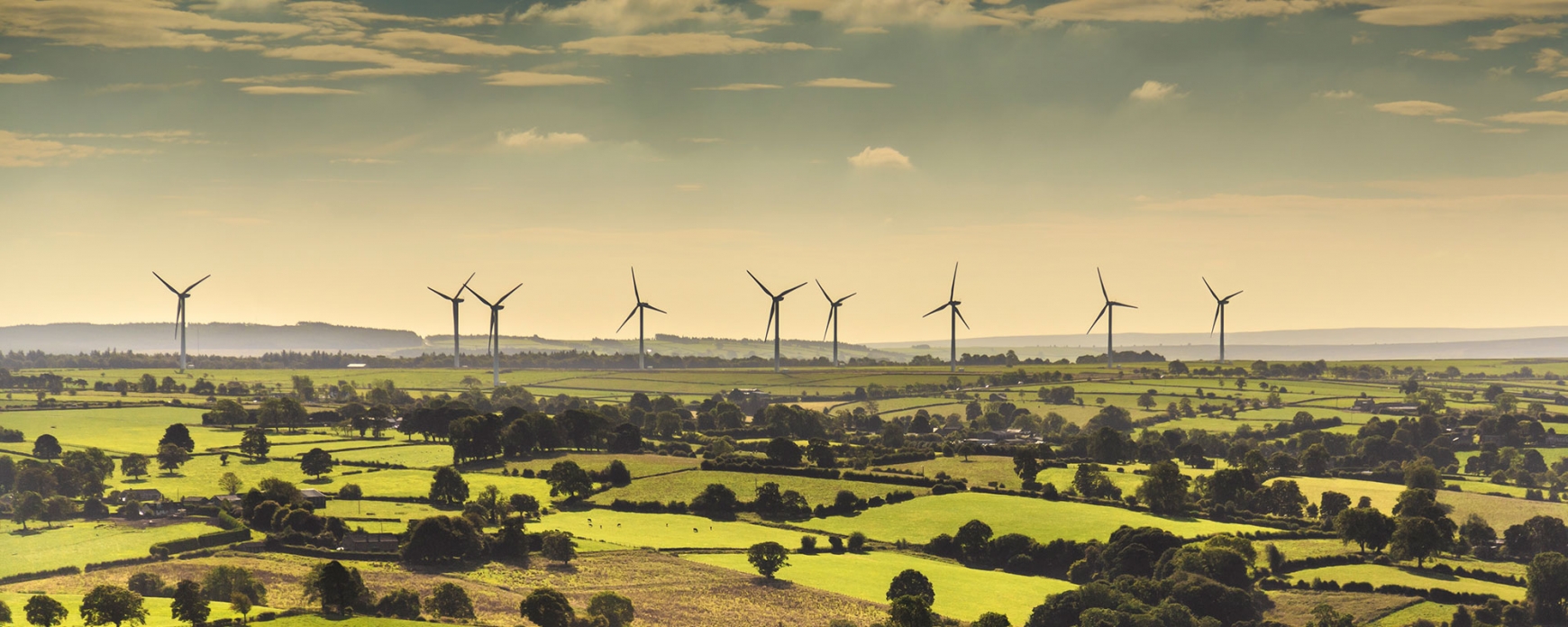Renewable technologies are increasing in popularity due to their cost saving benefits and low maintenance costs, but also the ‘green energy’ they produce, which is vital in helping to achieve the NFU’s Net Zero target of 2040. There are different renewable technologies available to install both on domestic and business properties and at NFU Energy, we have put together renewable guides which are filled with information and answers to all your frequently asked questions.
NFU Energy's guide to Wind Energy
Over the last few decades, farmers and a growing wind power sector have begun to make use of the UK’s geography and take advantage of the fact that we are one of the windiest countries in Europe.
British farmers have been harnessing the wind’s energy for centuries. However, generating electricity has only been developed more recently, with the first commercial wind farm built in 1991 in Cornwall.
How does wind energy work?
Wind is essentially the movement of air across the earth, caused by the sun heating the earth, which in turn causes hot air to rise and cold air to sink down and replace it. The movement of the air, and changes in air pressure are what cause winds to blow.
Wind turbines capture this kinetic energy with their blades, and rotate, turning it into mechanical energy, which spins a generator to generate electricity. Like any generator, a wind turbine can be very small or very large; some of the largest turbines will have individual blades that are more than 100m long. The greater the rotor diameter, the more energy can be harnessed.
Considerations
Nearly all wind turbines installed in the UK will need planning permission; only very small ones are covered by Permitted Development rights. The planning process involves community engagement to allow local communities to voice their opinion for onshore wind power developments. There are numerous planning considerations in local/regional/national planning policy – including sites near Public Rights of Way, designated landscapes, ecological and ornithological sites, etc.
Other things that will need to be considered in the development stage of a project include:
- Siting of the turbine(s) – Average wind speeds, local topography and turbulence
- Aviation Radar Interference with commercial or military systems
- Acoustic modelling
- Shadow Flicker
If you would like more information on Wind technologies, or if you have any questions, please call the NFU Energy team on 024 7669 6612.


